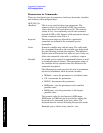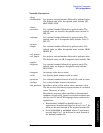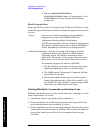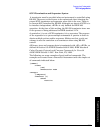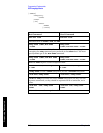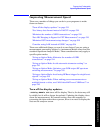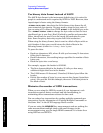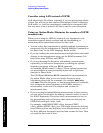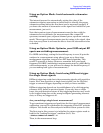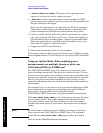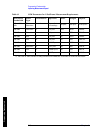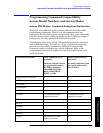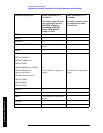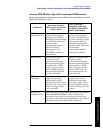
514 Chapter6
Programming Fundamentals
Improving Measurement Speed
Programming Fundamentals
Consider using LAN instead of GPIB.
LAN allows faster I/O of data, especially if you are moving large blocks
of data. You will not get this improved throughput if there is excessive
LAN traffic (i.e. your test instrument is connected to enterprise LAN).
You may want to use a private LAN that is only for your test system.
Using an Option Mode: Minimize the number of GPIB
transactions.
When you are using the GPIB for control of your instrument, each
transaction requires driver overhead and bus handshaking, so
minimizing these transactions reduces the time used.
• You can reduce bus transactions by sending multiple commands per
transaction. See the information on “Putting Multiple Commands on
the Same Line” in the SCPI Language Basics section.
• If you are making the same measurement multiple times with small
changes in the measurement setup, use the READ command. It is
faster then using INITiate and FETCh.
• If you are changing the frequency and making a measurement
repeatedly, you can reduce transactions by sending the optional
frequency parameter with your READ command.
(for example, READ:<meas>? {<freq>}) These optional parameters
are not available in some personality modes such as Spectrum
Analysis or Phase Noise.
The CONFigure/MEASure/READ commands for measurements in
the option Modes allow you to send center frequency setup
information along with the command. (for example, MEAS:PVT?
935.2MHz) This sets the power vs. time measurement to it’s defaults,
then changes the center frequency to 935.2 MHz, initiates a
measurement, waits until it is complete and returns the
measurement data.
• If you are doing bottom/middle/top measurements on base stations,
you can reduce transactions by making a time slot active at each of
the B,M,T frequencies. Then issue three measurements at once in
the programming code and retrieve three data sets with just one
GPIB transaction pair (write, read).
For example, send READ:PFER? <Freq_bottom>;PFER?
<Freq_middle>;PFER? <Freq_top> This single transaction initiates
three different phase and frequency error measurements at each of
the three different frequencies provided and returns the data. Then
you read the three sets of data.



